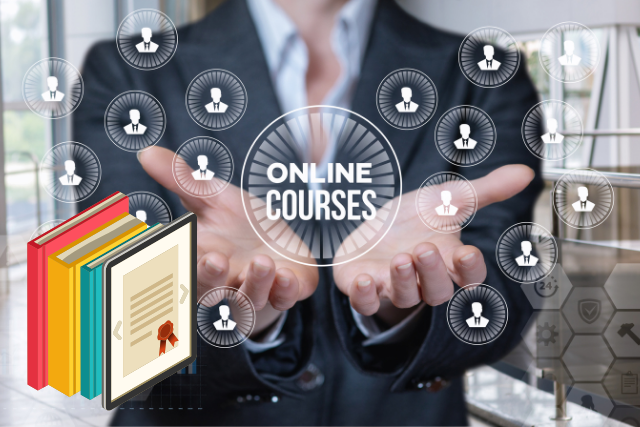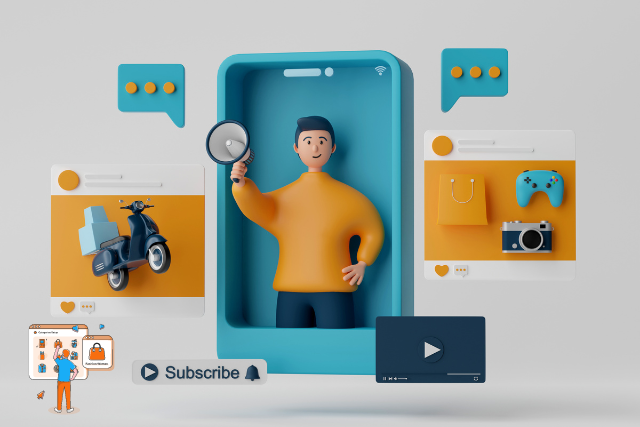Writing a high-converting sales page can feel like an overwhelming task. You know your product is great, but how do you convince others to feel the same way? The truth is, even the best products won’t sell themselves. In a crowded online market, your sales page needs to do more than just inform—it needs to captivate and persuade.
Here’s where the magic happens: with the right words and structure, you can turn a casual visitor into a paying customer. The key? A carefully crafted, step-by-step process that taps into your audience’s emotions builds trust and eliminates doubts. Every element of your sales page plays a crucial role—from the attention-grabbing headline to the final call to action.
But writing a high-converting sales page doesn’t have to be intimidating. Whether you’re a seasoned copywriter or just starting, following the right framework can transform your page into a powerful sales tool.
In this guide, we’ll break down the 7 essential steps to create a sales page that not only grabs attention but also motivates your readers to take action. Ready to boost your conversions? Let’s get started.
Table of Contents
Step 1: Craft a Curious and Benefit-Driven Headline
The headline is the first thing your visitors see when they land on your sales page, and it’s arguably the most important element. A great headline does more than just grab attention—it also sparks curiosity and clearly communicates the benefit the reader will receive if they continue reading.
Why Your Headline Matters
Studies show that 80% of people only read the headline, and if it doesn’t catch their attention, they’ll leave without exploring the rest of the page. So, if your headline doesn’t compel them to stay, your efforts on the rest of the page won’t matter. The goal is to make the reader curious enough to want to learn more and entice them with a powerful promise of benefits.
How to Create a High-Converting Headline:
- Focus on the Benefit: Your headline should answer the question, “What’s in it for me?” Let the reader know exactly what they’ll gain by reading further or purchasing your product.
- Spark Curiosity: Create intrigue by leaving just enough information unsaid. Make them want to read more to understand the full picture.
- Keep it Clear and Simple: Avoid jargon or overly complex phrases. A clear, benefit-driven message will outperform something vague or overly clever.
Examples:
- Instead of “Lose Weight Fast,” try “Drop 10 Pounds in 30 Days—Without Starving Yourself.”
- Instead of “Learn Digital Marketing,” say “Master Digital Marketing in 6 Weeks and Triple Your Sales.”
Tools to Craft Headlines:
- CoSchedule Headline Analyzer: This tool helps you evaluate the effectiveness of your headline based on elements like emotion, power words, and clarity.
- Headline Studio by MonsterInsights: Another great tool to analyze your headline’s SEO potential and engagement.
The goal of your headline is to grab attention and clearly state the value your product or service offers.
Step 2: Hook the Reader With a Story in the Lead
Once you’ve captured your audience with the headline, it’s time to engage them with the lead—the opening section of your sales page. The lead is where you begin to draw readers in, and one of the best ways to do this is through a story.
Why Stories Work in Sales Copy
Stories connect with people on an emotional level, and emotion plays a huge role in decision-making. A well-crafted story can create a powerful connection between the reader and the product or service you’re offering. It brings the page to life, making it more engaging and relatable.
How to Write a Compelling Lead:
- Identify the Problem: Start by talking about the reader’s pain point. The goal is to make the reader feel that you understand their problem and can offer a solution.
- Introduce a Story: This could be a personal story, a customer testimonial, or a fictional narrative that mirrors the reader’s situation.
- Show Empathy: The reader should feel like you understand their situation deeply. Use language that resonates with their emotions and experiences.
For example, if you’re selling a course on productivity, you could start with a story about someone who was overwhelmed and struggling to balance work and life—until they discovered your system, which transformed their schedule and stress levels.
Step 3: Make Your Story Emotionally Compelling
Telling a story isn’t enough—it needs to be emotionally compelling to keep the reader engaged. The more your story taps into emotions like frustration, fear, or hope, the more powerful it will be. People buy based on emotion and justify with logic, so it’s important to create a narrative that evokes feelings.
What Makes a Story Compelling?
- Relatability: The reader should be able to see themselves in the story. Describe common struggles, frustrations, and desires that your audience experiences.
- Conflict: Every great story has a conflict. Introduce the problem that your product or service will solve.
- Transformation: Show how your product transformed the person in the story from struggling to successful. This creates an aspirational vision for the reader.
For example, imagine you’re selling a financial planning course. Your story might focus on someone who was living paycheck to paycheck, but after taking your course, they saved enough money to take a dream vacation, buy a home, or retire early.
Step 4: Build Credibility and Trust
Now that you’ve connected with your audience emotionally, it’s time to build trust. Your readers need to know that you’re credible and that your product or service delivers results. Without trust, even the most engaging sales page won’t convert.
How to Build Credibility:
- Showcase Testimonials: Social proof is one of the most effective ways to build trust. Highlight testimonials from satisfied customers who achieved results with your product.
- Present Case Studies: Share in-depth case studies that demonstrate how your product solved problems and delivered measurable results.
- Expert Endorsements: If possible, include endorsements from well-known figures or experts in your industry.
- List Credentials: Include any certifications, awards, or media mentions that add to your credibility.
For example, if your product has been featured in major publications like Forbes or The New York Times, or if you have expert endorsements, this is the place to mention it. Visual proof, like photos or videos, can also add authenticity to testimonials.
Step 5: Reveal Your Offer in a Clear, Irresistible Way
Once you’ve built trust, it’s time to reveal your offer. At this point, your reader should be intrigued and emotionally invested, so the offer needs to present value clearly and effectively.
How to Present Your Offer:
- Be Specific: Clearly outline what the customer will receive. Whether it’s a physical product, a service, or digital content, explain exactly what they’ll get.
- Focus on the Benefits: Don’t just list features—tie each feature to a benefit. For example, instead of saying “10 modules,” explain how those 10 modules will help them achieve a specific outcome.
- Use Visuals: Include images, videos, or mockups to make the offer more tangible and appealing.
- Make It Irresistible: Include bonuses, discounts, or other incentives to make your offer even more compelling.
For example, if you’re selling an online course, don’t just list the modules—explain how each module will solve a specific problem. Then, add bonuses like downloadable worksheets, access to a private community, or a free 1:1 coaching session to make the offer feel like a no-brainer.
Step 6: Stack the Benefits and Remove Risk
By this point, your reader is likely interested in your offer, but they might still hesitate. This is where benefit stacking and risk removal come in. You want to maximize the perceived value of your offer while removing any fear or doubt they might have about making the purchase.
How to Stack the Benefits:
- Highlight All Benefits: Make sure each feature is tied to a specific benefit. Instead of simply saying, “12 hours of video content,” say, “Learn everything you need to know in just 12 hours of engaging, step-by-step video lessons.”
- Add Bonuses: Include extras that increase the value of your offer. These could be free consultations, additional resources, or extended access to the product.
How to Remove Risk:
- Offer a Money-Back Guarantee: A money-back guarantee can alleviate customer concerns. If they know they can get a refund, they’ll feel safer making the purchase.
- Provide a Free Trial: If applicable, offer a free trial or demo. Let them experience your product before committing to a full purchase.
By stacking benefits and removing risk, you eliminate objections and decide to buy easier.
Step 7: Create Urgency and Address Objections
The final step in creating a high-converting sales page is to create a sense of urgency and scarcity while addressing any remaining objections. People are naturally inclined to procrastinate, so you need to give them a reason to act now.
How to Create Urgency:
- Limited-Time Offers: Offer a special discount or bonus that expires soon. For example, “Get 50% off if you purchase by midnight tonight.”
- Limited Availability: If your product is in short supply or available to a limited number of people, mention this. For example, “Only 10 spots left in the course.”
- Countdown Timers: Use a countdown timer to reinforce the urgency of the offer visually.
How to Address Objections:
- FAQs: Include a Frequently Asked Questions (FAQs) section to address common concerns, such as pricing, delivery times, or product effectiveness.
- Transparency: Be open and transparent about any potential concerns. For example, if your product requires a learning curve, acknowledge it and explain how you’ll help the customer succeed.
By creating urgency and handling objections directly, you remove the final barriers to conversion.
Final Thoughts: Follow These 7 Steps to Write a High-Converting Sales Page
Writing a high-converting sales page is all about guiding your reader through a journey—from attention to interest, desire, and finally, action. By following these seven essential steps—crafting a compelling headline, hooking the reader with a story, building credibility, presenting a clear offer, stacking benefits, removing risk, and creating urgency—you can significantly increase your chances of turning visitors into customers.
Remember, the most successful sales pages are not just about selling a product—they’re about understanding your customer’s needs, offering a solution, and providing value every step of the way.
Now it’s your turn: use these steps as a blueprint to write your next high-converting sales page and watch your conversion rates soar!
FAQs
1. How important is the headline on a sales page?
The headline is crucial because it’s the first thing visitors see. A strong, benefit-driven headline can capture attention and encourage readers to stay on the page.
2. Can storytelling really boost sales conversions?
Yes, storytelling engages readers emotionally, making your message more relatable and memorable. A good story can create trust and motivation to buy.
3. How can I eliminate risk on my sales page?
Offer a money-back guarantee or free trial to reduce the customer’s fear of making a bad purchase. This gives them peace of mind when buying.
4. What’s the best way to create urgency without being pushy?
Use authentic urgency, such as limited-time offers or countdown timers, without faking scarcity. People appreciate transparency and urgency when it feels genuine.
5. How do I choose the right testimonials?
Select testimonials that reflect common customer concerns or highlight the key benefits of your product. Use specific stories with real data to back up your claims.
6. How do I address objections effectively?
Include a well-structured FAQ section and be upfront about potential concerns. Acknowledge customer hesitations and provide solutions or reassurances.







